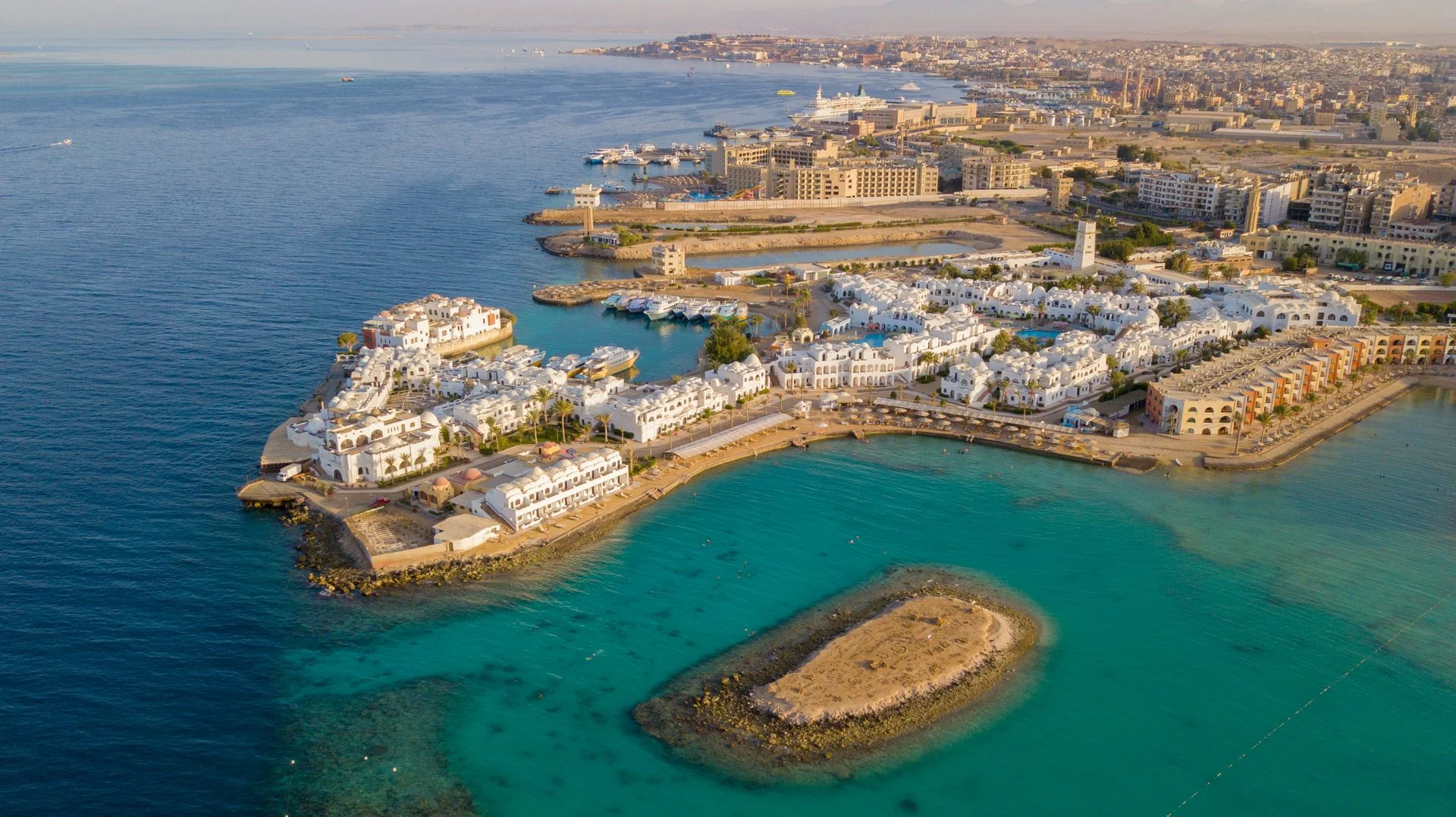Scuba Diving in Hurghada (Red Sea)
The Ultimate Guide
Hurghada is one of Egypt’s original Red Sea resorts and remains a popular base for day‑boat diving and liveaboard departures. Situated on the mainland’s eastern shore, the city offers easy access to a wide variety of reefs, wrecks and islands within a short boat ride. Warm, clear waters, gentle conditions and lively coral gardens make Hurghada ideal for training and fun diving, while nearby sites such as Abu Nuhas and the Thistlegorm wreck keep more experienced divers enthralled. Topside, the modern resort town boasts a lively promenade, international restaurants and plenty of après‑dive entertainment.
Difficulty
Moderate
Temperature
21-28°C
Visibility
15-30m

Diving Highlights
Best Months to Dive
Getting to Hurghada (Red Sea) for Diving
✈️Transportation
Hurghada International Airport (HRG) is well served by scheduled and charter flights from Europe and the Middle East, making this one of the easiest Red Sea destinations to reach.
The airport is about a 20‑minute taxi ride from the marina district where most dive centres are located.
Overland buses connect Hurghada to Cairo (approximately 6 hours) and to Luxor and Marsa Alam.
Many dive operators offer airport transfers and can arrange day boats, speedboats and liveaboards departing from the main marina.
Country
Egypt
Currency
Egyptian Pound
Electricity
220V, 50Hz, Euro Plug
Cost of a Dive Trip in Hurghada (Red Sea)
Day Trip
Dive Resort
Liveaboard
Meal
Accommodation
Best Dive Sites in Hurghada (Red Sea)
🐠Giftun Islands (Small & Big)
A pair of islands just offshore from Hurghada offering shallow coral gardens, sandy lagoons and gentle drift dives. Expect clouds of orange anthias over branching corals, resident Napoleon wrasse and occasional dolphins cruising by. The protected bays make this an excellent spot for beginners and snorkellers.
🐢Abu Nuhas Wrecks
Nicknamed the “ship graveyard”, this reef northwest of Hurghada holds four merchant wrecks — Giannis D, Carnatic, Chrisoula K and Kimon M — lying between 5 and 30 m. Each is encrusted with corals and home to lionfish, glassfish and schooling snapper, and can be explored on a single day‑boat trip or as part of a liveaboard.
🦈Carless Reef
A pair of steep pinnacles rising from 12 m to the surface. The tops are carpeted in hard corals and anemones, while the sides drop to 25 m with clouds of fusiliers and occasional grey reef sharks cruising in the blue. Currents can be strong, making this a great drift dive when conditions are right.
🐙SS Thistlegorm (via liveaboard)
One of the world’s most famous wrecks, this British World War II cargo ship rests at 30 m in the Straits of Gubal. Penetrate the holds to see trucks, motorcycles and ammunition frozen in time, then circle the exterior where giant trevally, barracudas and batfish patrol. Usually dived from liveaboards, some long‑range day trips also visit.
🐚Shaab El Erg (Dolphin Reef)
A horseshoe‑shaped reef north of Hurghada where a pod of bottlenose dolphins often rests. The sandy bottom at 12 m is dotted with coral heads sheltering octopus and moray eels. Snorkellers and divers enjoy the chance to interact with the dolphins on their terms.
What Divers Say About Diving in Hurghada (Red Sea)
Alex Thompson
Marine Biologis / DivemasterHurghada delivers exactly what many divers come to the Red Sea for: easy logistics, great visibility and an endless variety of sites. One morning you might drift past soft coral‑covered pinnacles at Carless Reef, the next day explore the haunting holds of the World War II Thistlegorm packed with bikes and trucks. Between dives you relax on comfortable day boats with shaded decks and fresh Egyptian cuisine, and evenings are spent wandering the seaside promenades or sampling seafood in the marina. It’s a great place to log dives, practice skills or simply enjoy the colourful reefs without venturing too far from town.
Frequently Asked Questions About Diving in Hurghada (Red Sea)
When is the best time to dive in Hurghada?
Diving is possible year‑round, but April–May and October–November offer the best combination of warm water, good visibility and moderate air temperatures. Summer months are hot on land but the sea reaches 28 °C, while winter months have cooler water around 21 °C.
What marine life can I see around Hurghada?
Expect colourful reef fish, groupers, moray eels, turtles, barracudas and occasional dolphins. On deeper sites you may encounter reef sharks, eagle rays and, in spring, schools of dolphins or pilot whales. The wrecks are encrusted with soft corals and home to giant trevally, batfish and glassfish.
Are there suitable sites for beginners?
Yes. Many sites like Shaab El Erg, Giftun Soraya and the shallow parts of Carless Reef have gentle slopes and sheltered conditions ideal for beginners and training dives. More challenging sites such as the Abu Nuhas wrecks or Brother Islands are better suited to advanced divers.
How many dive sites are there around Hurghada?
Over 30 dive sites lie within day‑boat range, including reef gardens, drift dives, wall dives and several famous wrecks. Liveaboards departing from Hurghada expand the list to include remote offshore reefs and the Thistlegorm.
Can I dive the Thistlegorm from Hurghada?
Yes. Many liveaboards include an overnight voyage to the Thistlegorm, and some day boats offer long‑range trips. Expect multiple dives on the wreck to explore its holds and decks, often combined with nearby reefs like Ras Mohammed.
What thickness wetsuit should I bring?
In summer a 3 mm shorty or full suit is sufficient as water reaches 27–28 °C. In spring and autumn a 5 mm wetsuit keeps you comfortable, while in winter a 7 mm suit or semi‑dry is recommended for the 21 °C water.
Are there liveaboard options?
Absolutely. Hurghada is a major liveaboard hub with itineraries ranging from northern wreck safaris (Thistlegorm and Abu Nuhas) to longer trips visiting the Brothers, Daedalus and Elphinstone. These boats typically offer three or four dives per day and include all meals.